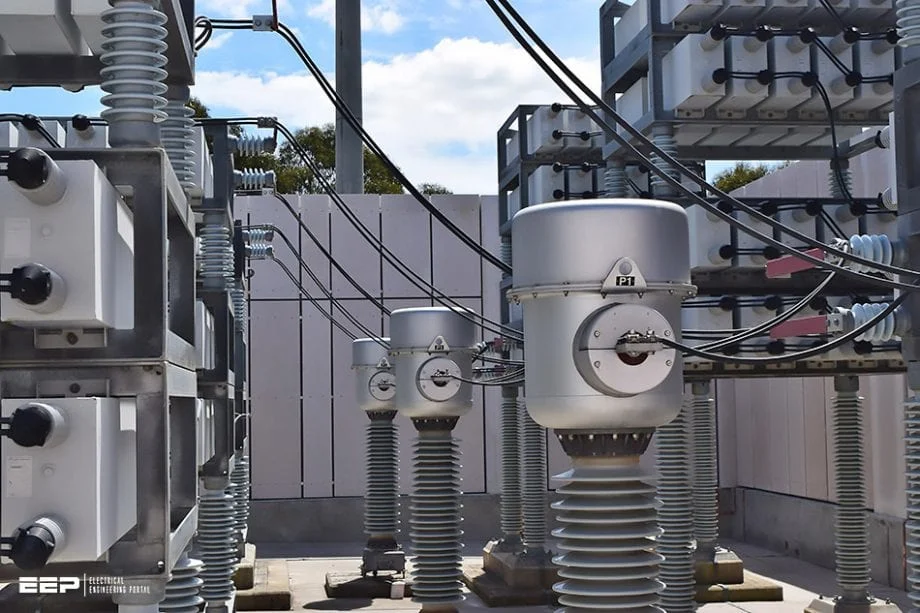In industries, you can have peace of mind knowing backup power sources such as UPS and diesel generators can work during emergencies. But what if these power sources fail to work on time? It can be a huge setback for you, and it can cost you not only in terms of financial loss but human lives too. Thus, it is essential to incorporate load testing as a critical component. Before entering real-life situations, you can test these devices for 100% power reliability with the help of load bank testing.
Get Your Free Sample!
Explore our custom services now. Email us at [email protected] for more details.
What is a Load Bank?
This independent electrical device generates a load similar to the average operational or accurate load, which a power supply can support. You can use this device to test the running efficiency of an electric source of power. It is a contained system that has controls as well as accessories in one installed location. With this, you can test, adjust, calibrate and verify the working of a power source.
How does it work?
First, you must connect the load bank to the power source output in place of their usual load. This power source can be a generator, battery, servo amplifier, and photovoltaic system. Now load banks mimic the bag similar to the average operating load, and the load bank dissipates the output that this device consumes typically.
Continue the test for some time. During the trial, you can take the readings. With these readings, you can verify the performance of the system and battery.
Based on their installation, you can divide load banks into two types:
- Permanent load banks: You can connect these testing devices to the power source as and when you require.
- Portable load banks: You can use these portable load banks for testing power sources such as standby generators and batteries.
Types of load banks:
You can find load banks in various sizes and configurations. However, every load bank has its advantages and disadvantages.
Resistive load banks:
Most industries use this bank with a resistive element. This testing set converts the electrical energy into heat with the help of a power resistor. Further, it removes the heat generated with the help of air-cooling or water-cooling systems.
This test equipment can easily mimic real-life loads like prime mover capacity, transient response, and prime mover controls at 100% capacity. However, when it comes to alternator capacity or alternator controls, the device has its limitations. Light bulbs and space heaters are prominent examples of resistive load banks.
During testing, you gradually increase the test load on the generator. With this, you determine the electricity produced at the total power rating. You can test if the generator can operate at full load without any failure. Additionally, you can check whether it is releasing exhaust gases and heat correctly through the cooling system.
You can find a wide array of options in this type, such as DC portable, AC radiator cooled, AC water-cooled, AC small/large portable, AC trailer-mounted, and AC stationery.
You can use the resistive load banks for testing the power capacity of generators with less than 200KVA, UPS systems, small generators, and portable generators.
Reactive load bank:
The power factor in these load banks is either leading or lagging. Based on that, you can divide it into two types:
- Inductive load banks:
As the name suggests, these use inductive loads or lagging power factors. It means the current is lagging behind the voltage. It has an iron-core reactive element that generates a lagging power load or PF less than unity. In this, the test bank converts the electrical energy into magnetic fields. Unlike resistive load banks, which can test up to 100% capacity, the inductor reactive load banks can test up to only 75% of its power. You can use this type for military applications and OEM testing.
- Capacitive load bank:
The working of the capacitive bank is also the same as that of the inductive one. However, the only difference is that it creates leading power loads. Thus, you can provide a reactive power source to the system, and this load mimics some non-linear and electronic loads. In an engine generator, you can check how much current converts into sound output with the help of this load bank. You can use this to test motor-driven devices, capacitors, and transformers.
Various applications use reactive load banks such as solar, mining, manufacturing, and telecommunications.

Image: connection and composition of capacitor bank
Resistive and Reactive Combined load banks:
As the name suggests, this bank combines both resistive and reactive elements. You can use this to give a test load at non-unity PF (lagging). The best part is that though the resistive and reactive components are in a single device, you can use the resistive only, inductor only, and variable lagging power factor independently.
You can use this combination device to qualify the operating competence of turbines and standby generators. Further, you can also use them for testing UPS systems, rotary UPS, and switchgear.
Electronic load banks:
You can use these banks for average and peak load capacities. To perform the test, apply the electronic load bank to the power source. It comes in an air-cooled or water-cooled design, and it can provide continuous current and power by mimicking a solid-state load. As a result, you can get quite precise data with electronic load banks compared to other banks. Additionally, you can program these banks and use them to test generator systems of all sizes. However, these testing banks are pretty costly.
Get Your Free Sample!
Explore our custom services now. Email us at [email protected] for more details.
Applications of load banks:
Here we will discuss three main applications wherein you can use these load banks.
Generator load bank testing:
You must indeed perform annual generator load bank testing for your generators for the following reasons:
- You can test the reliability and ability of your generator with a load bank. Additionally, you can verify whether your standby generators can provide the full power you expect from them.
- Usually, you perform no-load testing on generators, resulting in the accumulation of burnt fuel and soot in engine exhaust. Known as wet stacking, it can affect the efficiency and life span of your equipment. With load bank testing, you can burn the accumulated fuel.
- The National Fire Protection Association (NFPA) recommends annual testing to enhance the life of the generators.

Image: backup diesel generator
Battery and UPS system testing
A UPS generally powers the loads so that the devices do not get damaged in a sudden power failure. It is why you connect the UPS with loads through an inverter to ensure an uninterruptible power supply.
- The testing helps to validate the performance and battery in the UPS system.
- The testing also helps in preventive maintenance to avoid any future damages.
- It also helps to check if the current batteries are in good working condition. With this, you can replace the system in case of any suspected application problem.
However, make sure that you perform this testing after a week of commissioning of UPS. Otherwise, it will not give accurate results.

Image: UPS battery
Datacenter testing (electricity and air conditioning)
Load bank testing at data centers helps in identifying and resolving issues on time.
As data centers can vary in size, type of equipment, and their use across nations, you need to take the help of technical expertise and special equipment. With this, you can find the correct testing process and devices required.
Further, there is a need for standardized load bank equipment for testing across different locations. However, make sure that you take into account local conditions for the use of that equipment.

Image: data center
How to Test a Generator with a Load Bank?
To conduct the generator load bank test, you give an artificial load to it. Gradually, you increase the load and test the generator for different parameters. Follow these steps to complete the test:
Check whether its fuel tank and coolant tank are complete and the oil level is sufficient. Checking fluid levels is a crucial step.
Secondly, start the generator and let it reach up to its average operating temperature. Now, listen carefully for any problem or noises. If so, first correct them and then move further.
Thirdly, start connecting the loads. Begin with a 220-volt load and then add smaller ones like 110 volts. It would help if you did this until each leg reached 50% of the maximum rated load of the generator. Do not exceed more than this. Try to use 220 resistive loads such as space heaters. With this, you can apply an equal load to each leg.
Now, check the amperage and voltage of each leg with the ammeter and VOM, respectively.
If you have a 110/220-volt single-phase generator, you must get the voltage of each leg between 105-125 volts. The current is half of the rated watt output/voltage. Understand this with an example- let’s assume that each leg is neutral to 117 volts loaded, and the maximum rated capacity is 10 kilowatts continuous. In this scenario, you will find each leg loaded to 5000/117 or 42 amperes. If any of the legs drops below 105 volts, it means the generator needs testing and maintenance.
Now, while performing the test, you need to maintain this load for a particular time. During this time, take note of any overheating, abnormal noises, and monitor the results. In case of any problem, shut the generator off to minimize the damage.
While concluding, remove the loads one by one. Make sure that the generator works under light load for the next one hour. Also, make sure that you remove all loads 10 minutes before shutting off the generator.
Now, record, review, and report the results noted.
Conclusion:
Now you understand that ignoring or delaying this test can damage or reduce the efficiency of your working devices. So, make sure that your generators, batteries, and other devices are working fine from now on. If you need any help in this regard, we are here for you. Place your queries, and you will get a prompt response.
Hommer Zhao
Hommer Zhao serves as Director of Wiringo, leveraging a wealth of expertise in custom wire harness and cable assembly.
Drawing on more than a decade of hands-on expertise in the electronics field, Hommer focuses on wire harness manufacturing, custom cable assembly, and expedited restricted product production. His operations include a pair of wire harness production facilities and two dedicated PCB manufacturing & PCBA sites, all strategically located across Shijiazhuang, Shenzhen, Jiangmen, and the Philippines.
Hommer frequently refers to resources like Wiring Harness News for up-to-date insights and methods related to wire harness production.
Beyond his research and reading, Hommer also contributes to the Wiring Harness Manufacturer’s Association (WHMA), which offers invaluable resources and professional guidelines to wire harness specialists.
Get Your Free Sample!
Explore our custom services now. Email us at [email protected] for more details.




